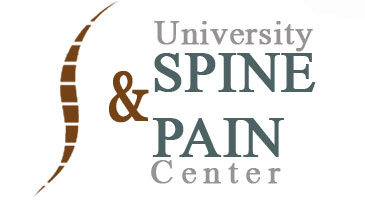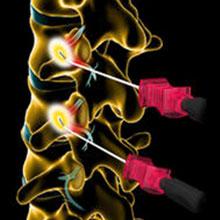Interventional Pain Procedures
WHAT ARE INTERVENTIONAL PAIN PROCEDURES?
Upon careful examination and diagnosis, our pain specialist will determine the underlying cause of your pain in order to formulate an individualized treatment plan. Interventional pain procedures offer a safe, non-invasive technique to provide pain relief and a quick return to your normal activities, all without relying on medication or surgery.
WHAT ARE THE MOST COMMON PROCEDURES?
-
TRIGGER POINT INJECTION: A local anesthetic (numbing medicine) is injected using a fine needle into taut bands of muscle that is causing pain, allowing pain relief with relaxation of the affected muscles.
-
ULTRASOUND GUIDED INJECTION: This technique utilizes ultrasound waves to visualize the human anatomy in real-time and improves accuracy of the injection.
-
FLUOROSCOPIC GUIDED INJECTION: Real-time X-ray guidance provides a safe and effective method of injecting medication into the body. This technique is often used in conjunction with other procedures listed below.
-
EPIDURAL STEROID INJECTION: In a lumbar epidural injection, a corticosteroid (anti-inflammatory medicine) is injected into the epidural space to reduce inflammation. Fluoroscopic (X-ray) guidance is utilized to visualize medication flow into the epidural space. A local anesthetic (numbing medicine) may also be injected). This injection may provide relief if dic problems, or dural, or nerve root inflammation are causing your pain.
-
FACET JOINT INJECTION: A local anesthetic (numbing medicine) and cortisone are injected into the facet joint under fluoroscopic (X-ray) guidance. This stops inflammation and pain from the facet joint. If this reduces your pain and helps you move your neck like normal, it may tell the doctor which facet joint is causing the pain.
-
MEDIAL BRANCH BLOCK: A local anesthetic (numbing medicine) is injected near the medial branch nerve. This stops the transmission of pain from the facet joint. If this reduces your pain and helps you move your neck like normal, it may tell the doctor which facet joint is causing the pain.
-
RADIOFREQUENCY ABLATION: Once the painful facet joints have been identified with medial branch blocks, radiofrequency (RFA) uses a small needle to utilize energy (heat) to disrupt nerve function. When this is done to a medial branch nerve, the. Nerve can no longer transmit pain from an injured facet joint.
-
SPINAL CORD STIMULATION: This is offered to patients with chronic and severe neuropathic (pain from damaged nerve tissue) pain. Some patients may have neuropathic pain in their extremities and some may have severe chronic low-back pain after spine surgery. It is for patients who have not responded to other treatment modalities. Sometimes it is offered to patients that due to health or age reasons cannot undergo spine surgery. A spinal cord stimulator interrupts nerve conduction along certain types of nerves that predominantly carry pain signals to the brain.
Click here to find out more about our services and schedule an appointment!

Our state of the art pain clinic and surgery center offer innovative and comprehensive approach to each individual needs. Call today to schedule your appointment.
QUICK LINKS
• Appointment
• About Us
• Providers
• Our Services
• Forms
• Testimonials
• Contact Info
CONTACT
Fax:
(424) 488-0498
OFFICE HOUR
Monday: 9am – 5pm
Tuesday: 9am – 5pm
Wednesday: 9am – 5pm
Thursday: Closed
Friday: 9am – 5pm
Sat & Sun: Closed
Holidays: Closed
Copyright – All Rights Reserved.
